Following Apple’s iPad-centric event where the company unveiled its latest iPad Air and iPad mini with Retina display, event attendees have been able to go hands-on with the new devices, which will be available in November. Below are some first impressions of Apple’s newest tablets, both of which feature some radical improvements.
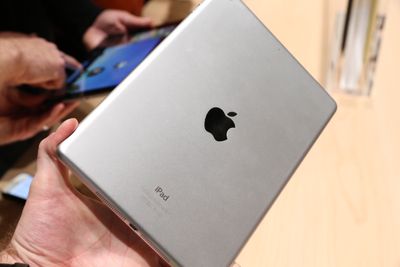
iPad Air
According to Engadget, the iPad Air is much slimmer and lighter, but it doesn’t feel cheap. While the size differences aren’t immediately apparent, the lighter weight is noticeable and the A7 processor is a major improvement.
Naturally, iOS 7 looks great on that Retina display – but you knew that already right? What’s really notable here, however, is just how zippy things are, thanks to the inclusion of an A7 chip, the same one introduced on the iPhone 5s. You really notice that speed when launching apps like iMovie, which boots up in an an instant. With a chip like this, you should be getting around the new free version of iLife pretty swiftly.
The Verge calls the iPad Air "really beautiful," with "cleaner bezels" and a thinner profile. It’s notably faster with the A7 processor, and fits better in a single hand.
Long story short: it looks and feels like a larger (but not that much larger) iPad mini, and that’s mostly a really good thing. It’s really beautiful, with cleaner bezels, a much thinner profile, and sharper, boxier edges.
Along with the new A7 processor and a handful of under-the-hood improvements, this is just about the upgrade we expected, but more than ever the iPad Air feels like you’re just holding a big screen full of the internet. That’s probably a good thing.
SlashGear notes that there’s a definite "wow-factor" when picking up the iPad Air.
The slimmed down bezels on the sides make a considerable difference to how it feels in your hand, leaving the tablet as a whole feeling somewhere in-between the 4:3 aspect of its display and the 16:9 of most rival Android slates. There’s still enough room to grip it, however, without overlapping the display too considerably.
It’s the little details that you notice after a while, however. The chamfering to the casing where it meets the toughened glass of the fascia, for instance, or the slimline side controls and lock-switch. Unfortunately there’s no Touch ID embedded into the home button, but we can see ourselves holding the iPad Air for longer periods since the 1-pound weight is almost a third reduction on the old model.
iPad mini with Retina Display
Apple’s newest iPad mini is similar to the first iPad mini, though it is slightly thicker and heavier. Engadget didn’t notice any major changes to the feel, but did note that the processor seems faster than the original.
There isn’t much on the outside that we haven’t seen before – in fact, it still sports the same home button, indicating that it doesn’t feature Touch ID – but there is one glaring exception: the Retina display. When compared to the original iPad mini that came out last year, this is a rather significant bump in pixel density, and we came away much more impressed with the mini as a result.
According to CNET, the iPad mini feels exactly like the first generation version and looks even sharper than the full-sized iPad Air.
However, while it feels great, it’s all about that screen. And given the Mini’s smaller 7.9-inch size, it looks even sharper than the full-size iPad Air. But to take advantage of the new pixel-dense screen, you will be paying up over last year’s Mini. It’s gorgeous, though, so I’d imagine the new premium will definitely be worth it to some people.
The Verge notes that the Retina mini is noticeably faster and smoother, with sharper, more readable text.
The same 7.9-inch display now features four times the pixels, a full 2048 x 1536 resolution, which makes text sharp and readable. Just as importantly, it makes iOS 7 look much better than it does on the original iPad mini, which often feels a little out of place on lower resolutions. iOS 7 also benefits from the iPad mini’s new 64-bit A7 processor, making scrolling and everything else notably faster and smoother.
TechCrunch calls the Retina mini’s screen "excellent," noting that it will be a dramatic change for users who are coming from a first generation device.
The eye-boggling 2048 x 1536 screen looks excellent in person, and for anyone coming from a generation one device it’s going to be a dramatic change. The iPad mini itself is very slightly thicker and heavier than its predecessor to accommodate the Retina Display with the same battery life, adding 0.01 inches and 0.05 pounds to the specs of the original, but that makes minimal difference to the actual feel of the product in the hand.
Apple’s iPad Air will be available beginning on November 1, while the Retina mini will come later in the month. Both tablets feature a 64-bit A7 processor, Retina screens, and ultra-thin designs.



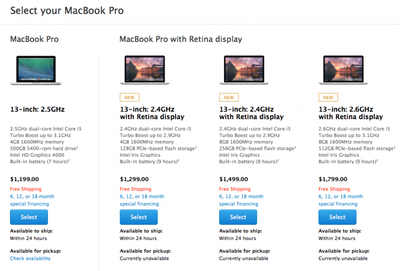 The
The 
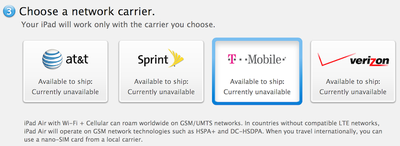
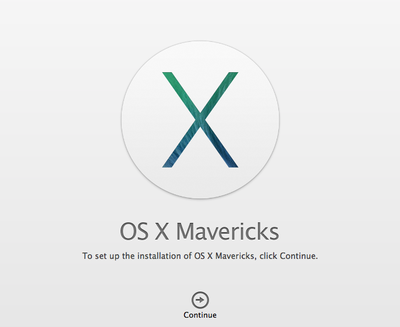
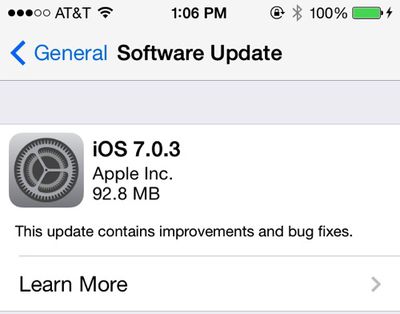
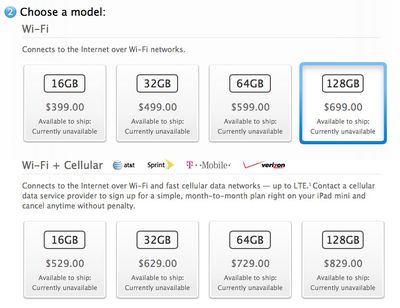
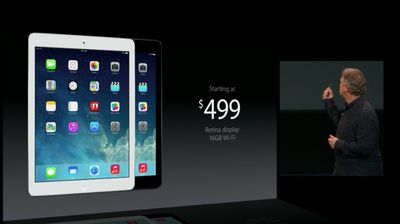
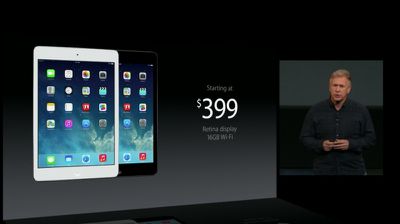
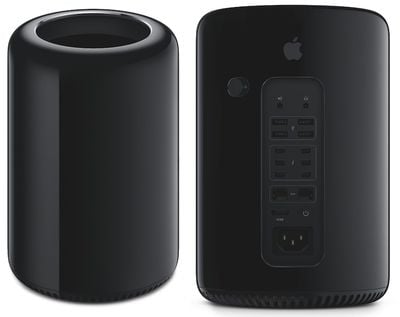
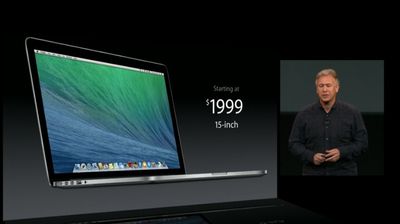
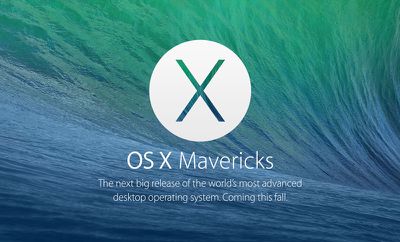
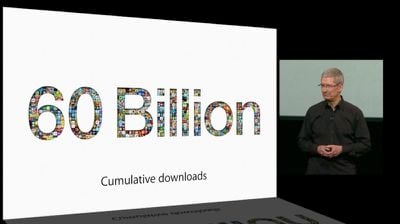 Apple also announced that iOS 7 is now running on approximately 64 percent of all iOS devices. It was the "Fastest software upgrade in history." iTunes Radio, a service that was introduced alongside iOS 7, now has more than 20 million listeners that have played 1 billion songs over the course of the last month.
Apple also announced that iOS 7 is now running on approximately 64 percent of all iOS devices. It was the "Fastest software upgrade in history." iTunes Radio, a service that was introduced alongside iOS 7, now has more than 20 million listeners that have played 1 billion songs over the course of the last month.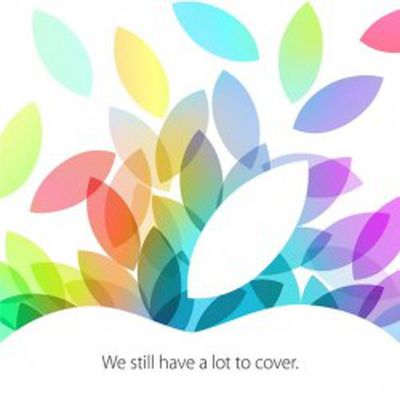 Apple's highly anticipated October media event is being held today at the Yerba Buena Center for the Arts in San Francisco. The event begins at 10:00 AM Pacific Time / 1:00 PM Eastern Time, and Apple is expected to unveil a number of new products including updated iPads, new Retina MacBook Pros, and new iLife and iWork offerings.
Apple's highly anticipated October media event is being held today at the Yerba Buena Center for the Arts in San Francisco. The event begins at 10:00 AM Pacific Time / 1:00 PM Eastern Time, and Apple is expected to unveil a number of new products including updated iPads, new Retina MacBook Pros, and new iLife and iWork offerings.









